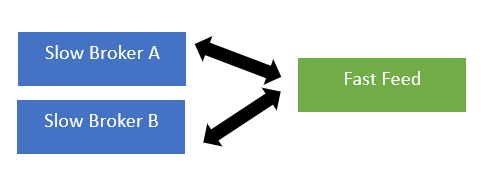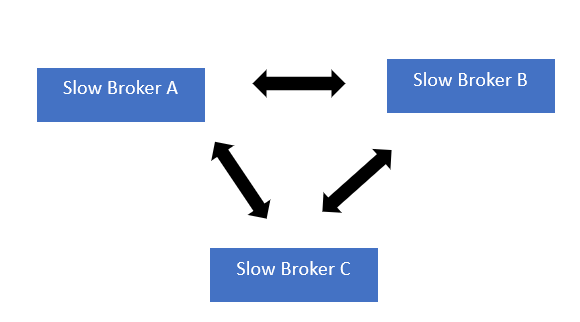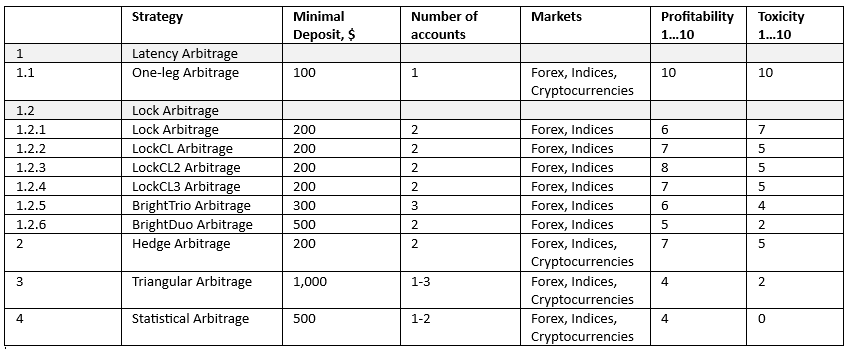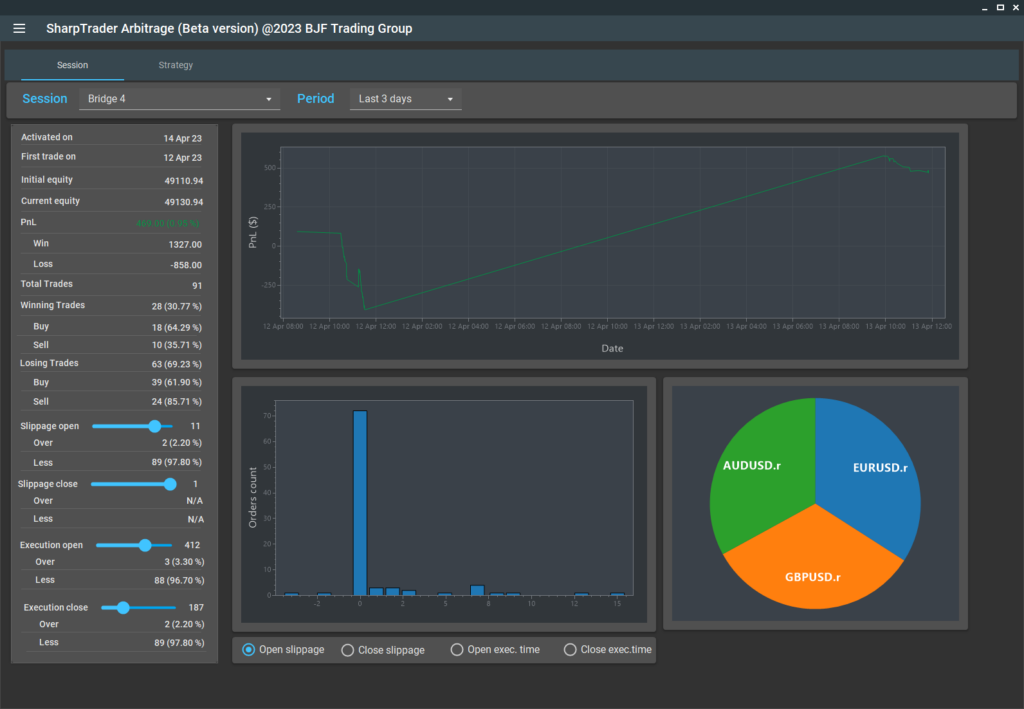Navigating Through the World of Arbitrage: Latency, Lock, Hedge, Triangular, and Statistical – A Comprehensive Guide to Deciding What’s Best For You Thursday June 15th, 2023 – Posted in: Arbitrage Software, cryptoarbitrage software, Forex trading
Arbitrage, a term coined from the French word ‘arbitrer’, meaning ‘to judge’, refers to the simultaneous purchase and sale of an asset to profit from price imbalances across different markets. These imbalances arise from supply-demand mismatches, geo-economic variations, and information discrepancies. While all arbitrage strategies aim to capitalize on these price discrepancies, the methods vary substantially.
Let’s journey through the arbitrage world, exploring five different types – latency, lock, hedge, triangular, and statistical. Each type comes with its unique challenges and rewards, and understanding these differences is key to selecting the one that best aligns with your risk tolerance, skill set, and investment goals.
Latency Arbitrage
1.1 One-Leg Arbitrage Strategy
One-leg Arbitrage strategy exploits time-delay discrepancies, primarily in high-frequency trading (HFT). Here, traders use advanced technologies to anticipate and capitalize on price discrepancies in different markets due to the latency in information transmission. While offering quick and substantial profits, this method requires significant upfront capital for technology investment, and there’s a high degree of competition among HFT firms.
In one-leg arbitrage, the arbitrage software compares quotes on an account, usually called the “slow account,” with a source of fast quotes, known as the “fast feed.” If the fast feed price precedes the account price, the program should open a buy order on the slow account, and vice versa.

If you have a significant investment fund, the required technological proficiency, and a high-risk tolerance, latency arbitrage could be a suitable choice.
1.2 Lock Arbitrage
The Lock arbitrage algorithm is also a type of latency arbitrage, but the fast-feed quotes are compared with two slow accounts. Through the ability to hedge or lock in profits, the goal of keeping an order open as long as possible is achieved.
Lock Arbitrage involves purchasing and selling an identical instrument simultaneously in different markets to lock in a guaranteed profit due to price differences. This strategy is relatively low risk, as the two transactions offset each other. However, it requires constant monitoring and is subject to execution risk if one side of the transaction fails to complete.

1.2.1 Lock Arbitrage Strategy
Lock Arbitrage Strategy – This technique equips the software to lock in profits in the quickest time or by the smallest pip difference. The Lock Latency Arbitrage strategy involves setting up two opposing orders (purchase and sale) on two different accounts for each trading symbol. These accounts can be with two distinct brokers or two separate accounts with the same broker. When an arbitrage opportunity emerges, the software completes the opened order, assigns a trailing stop to the matching virtual order, and opens a new locking order on the other side when the Stop Loss or Take Profit triggers.
1.2.2 LockCL Arbitrage Strategy
LockCL Arbitrage Strategy – This strategy, akin to the “Lock” strategy, enables the software to secure profits on the same account without concluding the trade. The next steps differ from the Lock method; the software won’t close the lock based on the shortest time or the smallest pip but will anticipate the next arbitrage opportunity. Upon receiving a buy arbitrage signal, the software will complete the Sell order, open a “virtual” Buy order with Stop Loss, Trailing Stop, and profit parameters. The real Buy order will be closed when the conditions are satisfied.
1.2.3 LockCL2 Arbitrage Strategy
LockCL2 Arbitrage Strategy – This technique, similar to the “Lock” strategy, permits the software to safeguard profits on the same account without closing the trade. The subsequent step for the LockCL2 method differs from the Lock strategy. When a buy arbitrage signal is received, the software will close the Sell order, open a “virtual” Sell order with Stop Loss, Trailing Stop, and profit parameters. The real Sell order will be reopened when the conditions to close are met.
1.2.4 LockCL3 Arbitrage Strategy
LockCL3 Arbitrage Strategy – This arbitrage technique is designed to perform arbitrage on one account while using another for locking. It employs Side 2 for arbitrage and Side 1 for locking, indicating that there’s no pursuit of an arbitrage situation on Side 1.
1.2.5 BrightTrio Arbitrage Strategy
BrightTrio Arbitrage Strategy: This is a specialized strategy, designed to enhance arbitrage trading across three accounts (A, B, and C), while effectively masking the trades. You can trigger the strategy either before or during arbitrage opportunities, with two options available.
Option 1: At the strategy’s initiation, assuming prices are equal on the fast feed and accounts A, B, and C, a BUY order is set up on account 1, and a SELL order on account 2.
Option 2: On strategy initiation, no initial trades are executed as prices remain aligned across the fast feed and accounts A, B, and C.
For a BUY arbitrage situation, where the fast feed price is higher than the slower accounts (A, B, C) by the preset difference to open (adjustable in the software settings), the program responds by opening a BUY order on account A with Stop Loss (SL), Take Profit (TP), and Trailing Stop applied. If the trailing stop or TP triggers, a SELL order opens on account B instead of closing the BUY order, thereby locking the maximum possible profit and the BUY order.
Regardless of whether option 1 or 2 is selected, these actions are executed consistently. If a BUY arbitrage scenario arises where the fast feed price exceeds the slower accounts (A, B, C) by the defined difference to open, the program closes the SELL order on account B. Simultaneously, a virtual BUY order is established at the closing price of the SELL order with SL, TP, and Trailing Stop applied. It is critical to note that this virtual order exists only in the software’s memory and is not transmitted to the broker’s server. If the trailing stop or TP triggers, the program opens a SELL order on account C, effectively securing profits and locking the BUY order.
Similarly, in a SELL arbitrage situation where the fast feed price falls below the slower accounts (A, B, C) by the set difference to open, the program closes the BUY order on account A. Simultaneously, a virtual SELL order is set at the closing price of the BUY order with SL, TP, and Trailing Stop applied. Upon the triggering of the trailing stop or TP, the program initiates a BUY order on account B, thereby locking profits and the SELL order.
By adhering to this procedure, the strategy ensures the fulfillment of several conditions, effectively concealing arbitrage trades:
- Each account consistently holds either a BUY or SELL open trade instrument.
- The duration of the order’s lifespan can be indefinitely extended and is customizable within the software.
- The pause duration between orders for a single trading instrument is determined by the software settings.
- The minimum profit value (Min profit) is adjustable within the software.
This well-rounded approach prevents the detection of multiple arbitrage trading indicators during account analysis, such as short-term orders, multi-pip orders, locking profits in several pips counter to the order’s direction, or frequent orders during periods of high market volatility. Upgrade your trading efficiency with the robust BrightTrio strategy today.
1.2.6 BrightDuo Arbitrage strategy
BrightDuo Arbitrage strategy has a highly complex algorithm and will be described in a this article.
If you’re looking for a more conservative investment strategy and you have the time to constantly monitor the markets, lock arbitrage might be a suitable fit.
Hedge Arbitrage Strategy
Hedge Arbitrage, also known as pairs trading, involves taking a long position in one security and a short position in a related security. This strategy is based on statistical measures of correlation and seeks to profit from any divergence from this correlation. The risks are relatively lower as losses on one trade can be offset by gains on the other. Let’s say we’re comparing the price of the eurodollar between broker A and broker B. If the price on broker B is higher, we sell the eurodollar on broker B and buy the same volume of eurodollar on broker A, and vice versa. The hedge position is closed upon a reverse signal or after a specified time has elapsed.

If you have a solid understanding of statistical analysis and are willing to assume a moderate amount of risk, hedge arbitrage could be your match.
Triangular Arbitrage Strategy
Triangular Arbitrage involves the trading of three different currencies in three different markets. Profits are made by exploiting discrepancies in the exchange rates between these currencies. This method is complex, requires constant monitoring of exchange rates, and is generally executed by algorithmic trading systems. For example, we have three accounts A, B, and C. We compare the price of EURGBP on account A with the price of the synthetic EURGBP obtained from the prices of EURUSD on broker B and GBPUSD on broker C. When a difference appears, we open orders on all three accounts. It should be noted that this strategy can also work on two accounts, or even on one, in case the broker does not align the quotes.

If you’re savvy in forex markets and have the resources for algorithmic trading, triangular arbitrage might be the right choice for you.
Statistical Arbitrage Strategy
Statistical Arbitrage leverages mathematical modeling to identify trading opportunities. These models predict price movements based on historical price data and other market factors. While this method can be quite profitable, it requires a deep understanding of quantitative analysis and mathematical modeling. For example, we can compare prices between Brent crude oil and Texas crude oil, or prices between the US30 and US100 indices between which a historical correlation is observed.
If you have strong quantitative skills and a knack for developing predictive models, statistical arbitrage could be an excellent choice.
Conclusion
Choosing the right arbitrage strategy depends on your financial goals, risk tolerance, and skills. Consider factors such as the required investment capital, market knowledge, and technological requirements. Each strategy carries its own risk-return trade-off and demands different skill sets.

Whether it’s the swift world of latency arbitrage or the calculated approach of statistical arbitrage, the choice ultimately lies with you. Whichever strategy you choose, remember to invest wisely, always be informed about market conditions, and adapt.
Introducing Sharp Trader™: The Ultimate Arbitrage Software for Cutting-Edge Trading
Ready to tap into the power of advanced trading strategies? Sharp Trader™ is here to revolutionize the way you interact with different markets. Designed with precision and flexibility in mind, this robust software delivers unprecedented trading opportunities.

Sharp Trader™ empowers you to navigate various markets seamlessly. Its robust functionality supports trading on a single market or engaging in multi-market operations. This versatility opens up a whole new dimension of potential profits, regardless of your trading style or preferred markets.
But the real game-changer? The array of arbitrage strategies at your disposal. Sharp Trader™ boasts an extensive suite of strategies, from traditional risk arbitrage and statistical arbitrage to the more complex latency and lock arbitrage. It’s never been easier to exploit price differences across markets or harness the power of high-speed trading.
With Sharp Trader™, you’re not just trading; you’re strategically capitalizing on market inefficiencies. The software is programmed to detect and execute trades at the speed of light, capturing profits that might be invisible to the human eye.
Moreover, Sharp Trader™ is built with user-friendly features that cater to both novice and experienced traders. Its intuitive interface and comprehensive tutorial resources make navigating the complex world of arbitrage trading as straightforward as possible.
Elevate your trading experience with Sharp Trader™ – the ultimate software for traders who seek efficiency, diversity, and a competitive edge. Get ready to explore a world where every market holds a new opportunity, and every strategy leads to potential profits. Buy Sharp Trader™ today, and experience the future of trading!
 Deutsch
Deutsch 日本語
日本語 العربية
العربية 한국어
한국어 中文
中文

